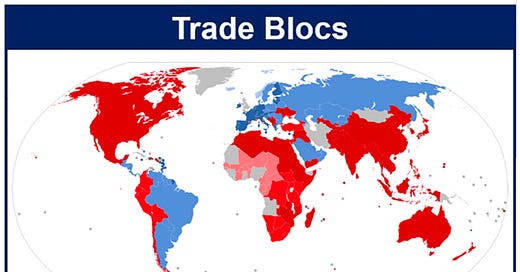NEW: Our two-volume published work, 7 Steps to Global Economic and Spiritual Transformation, is available at Volume I, Access to Tools, here and here and at Volume II, Application of Tools, here.
Recently, I was asked to comment on two contrasting articles regarding the global power structure, The Dark MAGA Gov-Corp Technate — Part 2, by Ian Davis, and The American Multipolar Technate, by Whitney Webb.
It’s interesting to see how these two analyses conflict and to see how the authors frame where US, EU, Russia, China, and India agree and disagree with each other.
As readers of this blog and my books (see links at the top) know, I’ve presented my own analysis of the main topics here—unipolar versus multipolar, the WHO and the vaccine/Covid PSYOPS, and nation-state sovereignty versus the central bankers.
Even after writing 7 Steps to Global Economic and Spiritual Transformation, a two-volume set of 550 pages, 1700 footnotes, and 5,000 citations, I still believe that the jury is out on the global power structure.
Certainly, there are places where the interests of the major powers are aligned, as we saw during the so-called virus event, with the US, Russia, and China all promoting vaccines, masks, and the fake pandemic. But whether this agreement signifies a unipolar power structure is open for debate. What can be said is that these three powers agree about reducing the world population and using a manufactured crisis engendered by lab-created, gain-of-function diseases present in the vaccines. It also shows us that all three of these powers routinely lie to the public. However, we should note that India did not follow this route; instead, they made ivermectin available to millions.
It’s also interesting that neither article discusses central banking and the difference between public and private ownership of the money creation process, even though the US and the EU operate under this model while Russia and China are currently operating under a hybrid model, with their central banks mostly under government control, yet allowing private commercial and investment banks to operate as a legacy to US investment and trade.
One of my recent blog posts discusses the proposition that the world is being carved up into three blocs, while one of the articles linked above proposes that “the powers-that-be” are favoring a more decentralized approach, into regional blocs. From an economic point of view, one of the key issues in international trade is the significant differences between the value of various currencies. For example, when the US imports from China it relies on low wages in China; so, there is a disparity between the cost of products that we can afford while many of the same products are out of reach for the average Chinese.
This brings up the question of how to get to a place where there is more equality in the global marketplace. One solution is to segregate various economic markets according to purchasing power (a possible objective of Trump’s tariffs), which could allow for eventual reintegration when the value of labor has equalized. This is not an approach that the capitalists would necessarily embrace, since their currencies are not based on the labor theory of value, but rather private control over capital (money that has been commodified via interest) and its inherent inflationary forces.
From my point of view, though, the only way to get to an integrated global economy is to (eventually) level the value of labor; after all, spiritually speaking, the value of each person’s time on this planet should be the same, regardless of their specialization. So, this is why my two-volume set covers both economic and spiritual transformation, and why I consider my thesis in good company, since Jesus threw the money changers off the Temple grounds; thus, in today’s world, usury has no place in the (envisioned) temple of democracy.
Going back to the unipolar/multipolar debate, Ukraine seems to be a litmus test for this question. The main reason that the West has targeted Ukraine (which at one time contained the capitol of Russia—Kyiv) is that Russia tends to dominate European trade when it operates through Ukraine. So, there seems to be a real battle here. Trump’s rhetoric regarding peace in Ukraine is likely a ploy to get the EU and UK to take over the US-created war (as has taken place in the last 10 days), even though Russia is still gaining ground. Perhaps if Polish and German troops cross the border, the situation on the ground will change. There is a lot of protesting in Europe regarding this, but Germany is reigniting its fascist laws to suppress dissent, and police violence (in response to agent provocateurs) is being used in multiple nations.
So, while the major powers may have an unwritten agreement to avoid the use of nuclear weapons, they are still fighting over economic and political control in certain areas. Perhaps this indicates that the unipolar and multipolar models overlap and that the black and white (“only two sides”) logical fallacy should be avoided.
* * *
We hope that you find our blog of value. If so, please feel free to share our articles and encourage others to sign up for our mailing list. NEW: Our two-volume published work, 7 Steps to Global Economic and Spiritual Transformation, is available at Volume I, Access to Tools, here and here and at Volume II, Application of Tools, here.




